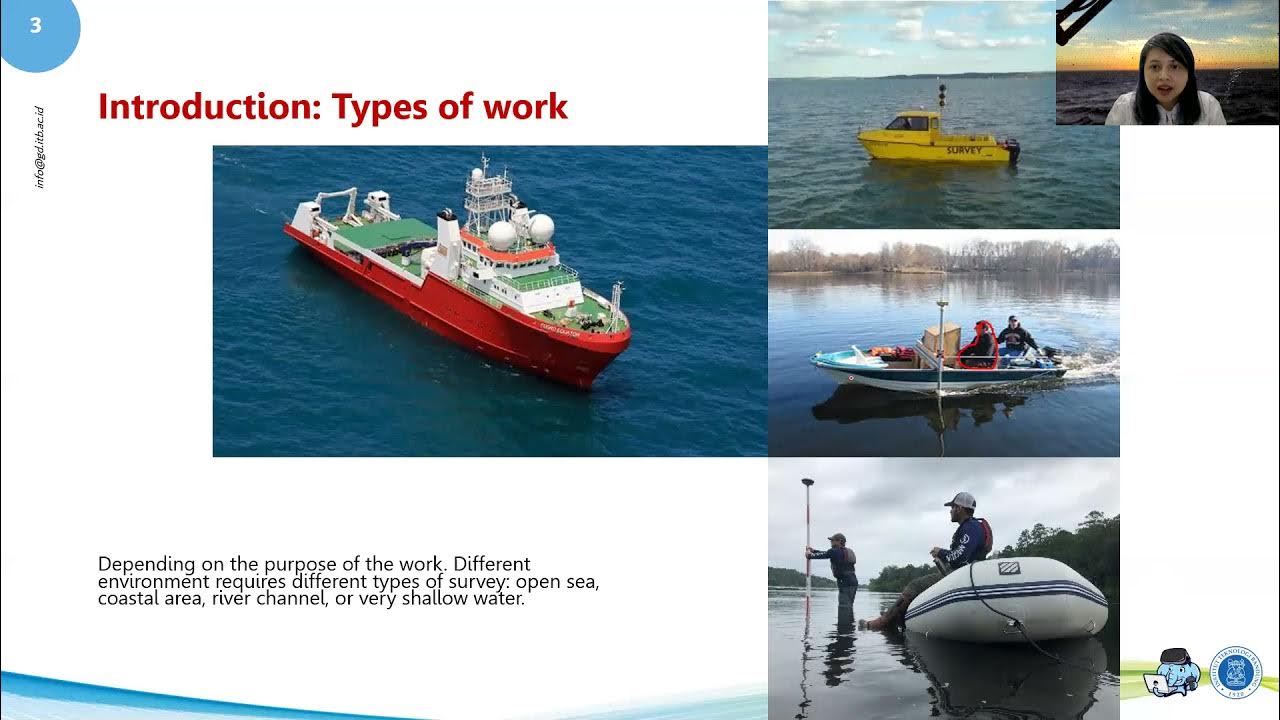Parallel Indexing: How to Determine & Set Parallel Index Lines l PI Lines l RADAR l Passage Planning
Summary
TLDRThis video script explains the maritime navigation technique of Parallel Indexing, crucial for maintaining a safe distance from hazards or staying on course. Utilizing radar and charts, mariners set reference lines parallel to the ship's course for continuous monitoring. The tutorial covers setting these lines on both electronic and paper charts, understanding 'Not Less Than' (NLT) and 'Not More Than' (NMT) lines, and ensuring the vessel remains within navigable waters, even amidst GPS inaccuracies.
Takeaways
- 🚢 Parallel indexing (PI) is a navigation technique used by mariners to maintain a safe distance from hazards and stay on course.
- 📍 PI involves using radar and navigational charts to create reference lines parallel to the ship's course for continuous monitoring.
- 🏝️ A radar conspicuous object, such as a lighthouse or headland, is needed as a reference point for setting PI lines.
- 🚫 Buoys and shorelines with drying heights are not reliable reference points due to potential drift or changes in water level.
- 🛳️ PI should be determined during the passage planning stage and can be set using electronic navigational charts or paper charts.
- 📏 The distance from the planned track to the PI line is crucial and is measured to establish the PI distance.
- 📊 The 'Not Less Than' (NLT) and 'Not More Than' (NMT) lines are set to ensure the ship stays within navigable water, even if off the planned track.
- 📡 Setting PI lines on radar helps monitor the ship's position relative to the reference point and planned track.
- 🔍 The ship's actual position may differ from the GPS due to interferences, making PI a valuable tool for continuous position monitoring.
- ⚓ Knowing the ship is on safe water, even if not along the planned track, is the primary objective of the PI technique.
- 🛣️ The NLT and NMT lines create a corridor of navigable water, ensuring the ship remains within safe limits even if off course.
Q & A
What is parallel indexing in navigation?
-Parallel indexing is a technique used by mariners to maintain a safe distance from navigational hazards or to ensure that a vessel stays on a desired track by using radar and electronic or paper navigational charts to create reference lines parallel to the ship's course.
What is the abbreviation for parallel indexing?
-Parallel indexing is commonly known as PI.
What are the prerequisites for setting up parallel indexing?
-Parallel indexing should be determined during the passage planning stage, and it requires the use of a radar conspicuous object as a reference point, which provides strong radar echoes like lighthouses, harbor walls, headlands, and large cliffs.
Why can't buoys and other floating objects be used as reference points for parallel indexing?
-Buoys and other floating objects cannot be used as reference points because they might drift away anytime, which makes them unreliable for setting parallel index lines.
What does the color green on charts indicate in the context of parallel indexing?
-The color green on charts indicates shoreline with drying heights, which are areas exposed at low tide but submerged at high tide, making them unreliable as reference points for parallel indexing.
How is the distance for the parallel index line measured?
-The distance for the parallel index line is measured from the planned track to the parallel index line, which is the PI distance.
What are the not less than (NLT) and not more than (NMT) lines in parallel indexing?
-The not less than (NLT) and not more than (NMT) lines are additional parallel index lines set in the radar to determine the safe navigable water corridor on both sides of the planned track.
How can you set the NLT and NMT lines on a radar?
-To set the NLT and NMT lines on a radar, you determine the distance of navigable water on both sides of the planned track, draw lines parallel to the planned track, and then measure the distances from the planned track to establish the NLT and NMT lines.
What should a mariner do if the reference point in the radar moves towards the ship?
-If the reference point moves towards the ship, it indicates that the ship is off track to starboard, and a port helm should be executed to bring the ship back to the planned track.
How does parallel indexing help in continuous monitoring of a ship's position?
-Parallel indexing helps in continuous monitoring by allowing mariners to see if the reference point is along the PI line, indicating that the ship is within the planned track. If the reference point moves away from or towards the PI line, it signals that the ship is off track, and corrective action is needed.
Why is it important to periodically fix the ship's position even when using parallel indexing?
-It is important to periodically fix the ship's position because GPS can be subject to inaccuracies due to environmental and atmospheric interferences, and parallel indexing provides a visual confirmation of the ship's position relative to the planned track.
Outlines

هذا القسم متوفر فقط للمشتركين. يرجى الترقية للوصول إلى هذه الميزة.
قم بالترقية الآنMindmap

هذا القسم متوفر فقط للمشتركين. يرجى الترقية للوصول إلى هذه الميزة.
قم بالترقية الآنKeywords

هذا القسم متوفر فقط للمشتركين. يرجى الترقية للوصول إلى هذه الميزة.
قم بالترقية الآنHighlights

هذا القسم متوفر فقط للمشتركين. يرجى الترقية للوصول إلى هذه الميزة.
قم بالترقية الآنTranscripts

هذا القسم متوفر فقط للمشتركين. يرجى الترقية للوصول إلى هذه الميزة.
قم بالترقية الآنتصفح المزيد من مقاطع الفيديو ذات الصلة
5.0 / 5 (0 votes)






